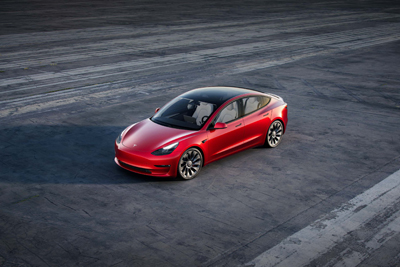Tesla sudden acceleration incidents allegedly should be formally investigated by the U.S. government, something federal safety regulators declined to do in 2021.
In a new safety defect petition filed with the National Highway Traffic Safety Administration, a consumer has requested safety regulators reconsider their 2021 denial of a Tesla unintended acceleration defect petition.
According to the petitioner, an estimated 1.8 million model year 2013-2023 Tesla Model 3, Model Y, Model S and Model X have defects that cause sudden unintended acceleration.
The petitioner, Ronald A. Belt, claims more evidence has come to light since NHTSA looked into acceleration incidents a few years ago.
The original Tesla sudden acceleration defect petition was announced in January 2020, when a petitioner alleged unintended acceleration had caused 110 Tesla crashes and 52 injuries.
Tesla responded to the acceleration defect petition by saying event data recorders were analyzed and the evidence showed drivers were pushing the accelerator pedals instead of the brake pedals.
"In other words, the car accelerates if, and only if, the driver told it to do so, and it slows or stops when the driver applies the brake," Tesla said at the time.
A year later, NHTSA announced investigators could find no evidence of defects that caused unintended acceleration in Tesla vehicles.
Tesla told NHTSA the vehicles were equipped with two independent position sensors and the motor shuts down if there are errors. Tesla also said its vehicles are designed for the brake pedal to override the accelerator pedal if both pedals are pressed at the same time.
NHTSA denied the Tesla unintended acceleration defect petition and determined a formal investigation was not necessary.
"There is no evidence of any fault in the accelerator pedal assemblies, motor control systems, or brake systems that has contributed to any of the cited incidents," NHTSA said. "There is no evidence of a design factor contributing to increased likelihood of pedal misapplication. The theory provided of a potential electronic cause of SUA [sudden unintended acceleration] in the subject vehicles is based upon inaccurate assumptions about system design and log data."
Safety regulators are now asked to reevaluate their decision because new evidence allegedly shows there are design problems that can cause intermittent high electrical current demands on the 12-volt DC systems.
According to the newest defect petition, alleged problems have been found with the inverter design of Tesla Model 3 vehicles.
"Design details include high resolution photographs of printed wire boards, electronic component part numbers, connections between various components, oscilloscope traces of various signals, and schematics of some of the key circuits involved," the new petition said. "An analysis of this data has found a cause for sudden unintended acceleration (SUA) in Tesla Model 3s that increases the accelerator pedal percent readings in both the vehicle log and in the EDR report without the driver stepping on the accelerator pedal."
NHTSA will evaluate the new defect petition and either grant or deny the petition to investigate the alleged acceleration problems.










Abby Andrews